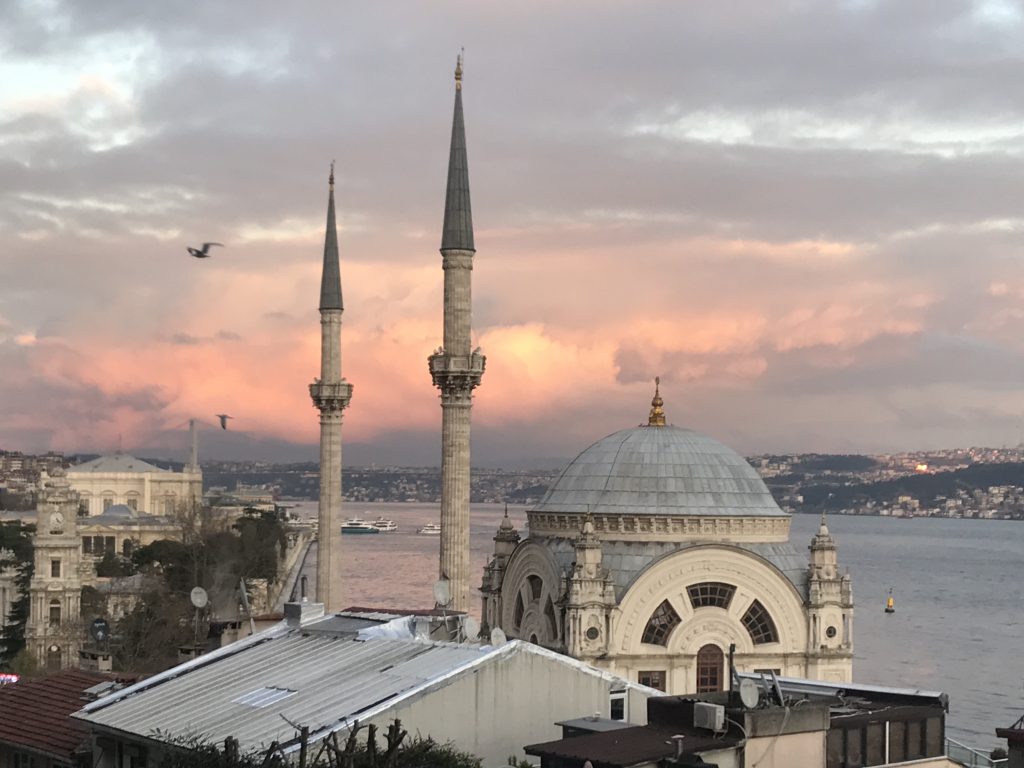
The latter half of my Istanbul trip involved a change of scene: from a hotel in Sultanahmet to a flat on the Bosphorus, from old Constantinople to modern Turkey by way of the T1 tram.
The location was great — a short walk from Taksim Square, the pedestrian shopping strip of Istiklal Caddesi, and backstreet restaurants in Cihangir and Çukurcuma — but for me its chief selling point was always that Bosphorus view.
The Bosphorus is the world’s narrowest strait used for international navigation, twisting and turning for 30 km (19 miles) between the Black Sea and the Sea of Marmara. Beyond Marmara lies another strait — the Dardanelles — and then the island-speckled Aegean and Mediterranean seas.
Its name, like so many others in this region, is believed to come from Greek myth. ‘Bósporos’ meant something like “cattle strait” or “cattle passage”, a reference to the story of Io. This unfortunate maiden had the mixed luck of attracting the eye of Zeus, the father of the gods, who, when he wasn’t hurling thunderbolts, was busy hurling his other mighty rod into the warm nooks and crannies of mortal women.
Old Zeus apparently transformed Io into a cow to hide her from his jealous wife Hera. Unfortunately the wife caught on to his ruse. She demanded this cow as a present, and after several plots and counter-plots, Hera sent a gadfly to sting bovine Io, driving her to wander the world in torment.
Io eventually crossed the strait that separates Europe and Asia, which thus acquired the name ‘Bósporos’ (or ‘cattle passage’). And that’s where this unfortunate object of godly lust leaves our story. But don’t despair over her fate. She did eventually regain her mortal form and became the ancestress of several other famous characters, including the hero Hercules.
Anyway, we don’t have time for the ancients right now. We were talking about the view from my flat.
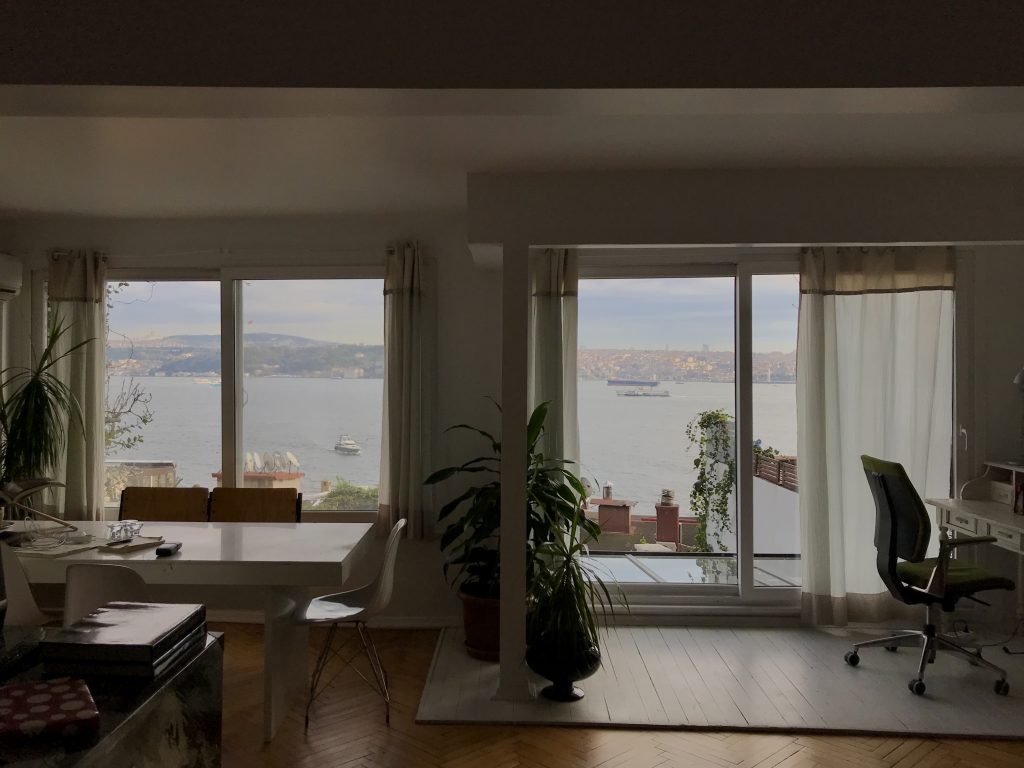
The Bosphorus is a vital warm water link for Russia, Ukraine and other nations, and its strategic importance has sparked both ancient and modern conflicts, including the Crimean War (1853-56), the Russo-Turkish War of 1877-78, and the 1915 Battle of Gallipoli.
This busy waterway also forms part of the continental boundary between Europe and Asia, which means you can hop a ferry to Asia for a coffee or a quick bite to eat.
You might notice the currents when you make that short crossing. Believe it or not, the Bosphorus has two different currents which run in completely opposite directions.
The main surface current flows towards the south at 0.9 metres per second, carrying the excess water of the Black Sea to the Mediterranean. The counter-current runs below the surface in the opposite direction, bringing saline water from the Marmara to the Black Sea.
The speed of the main surface current also changes, reaching 1.45 metres per second at its narrowest and deepest point (110m, or 361 feet) where the Bosphorus makes an arc at Küçüksu bay and, after kissing Kandilli Point, veers towards the Akinti Burnu. It’s so treacherous here that ancient mariners called it the Devil’s Current.
Strong winds also play havoc, whipping up waves and causing water levels to drop or rise. And the so-called strait is hardly straight. It’s filled with more blind corners than a Maltese village street.
I’ll give you one example. When a ship reaches the bit between Kandilli Point and Aşiyan, it has to make a 45-degree course correction amidst currents that can reach 3.6 to 4.1 m/s. It’s even trickier further south at Yeniköy, where the course changes by 80 degrees and forward and rear sight lines are completely blocked, making it impossible for ships coming from the opposite direction to see around the bend.
Navigating under these conditions is challenge enough, but we haven’t talked about the traffic.
Ferries and water buses cross between Europe and Asia — or zig zag back and forth between the two — thousands of times each day, threading their way between skiffs and fishing boats.
While all of this is going on, some 150 vessels per day are passing between the Black Sea and Marmara. Everything from giant oil tankers and container ships to Russian and Ukrainian rust buckets thread the world’s busiest commercial waterway.
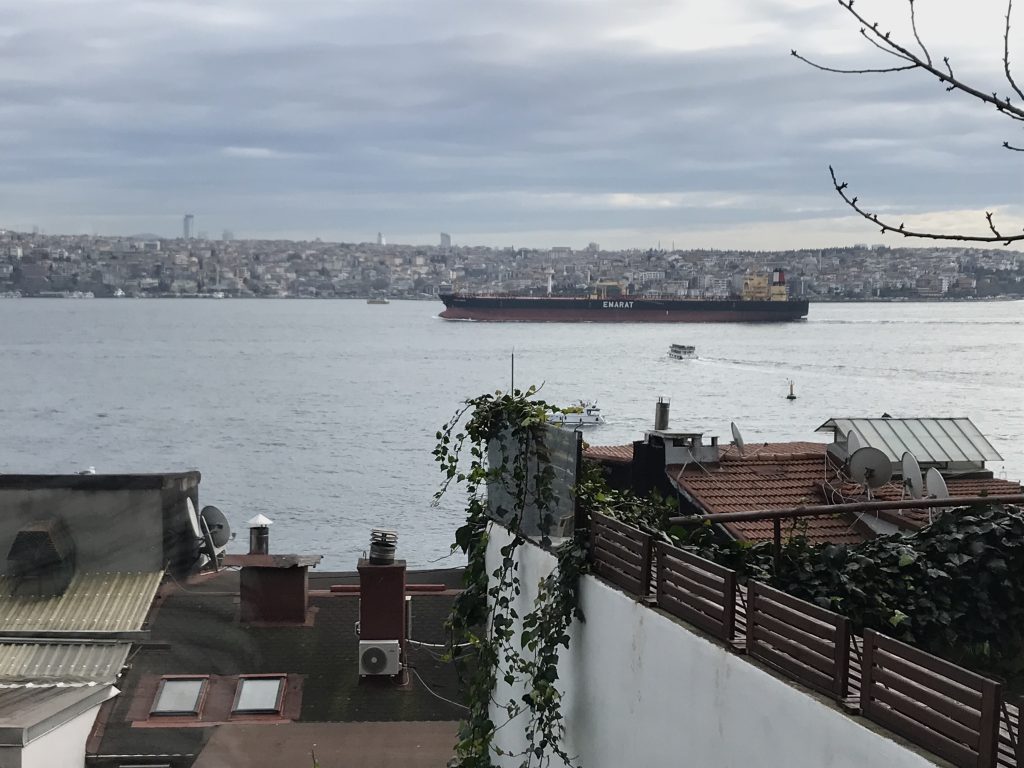
This was all happening right outside my window. I became a keen observer of it, as you can imagine.
My wife said I was ‘obsessed’. That was the word she used, ‘obsessed’. Can you believe it?
Yes, I did find a live shipping map on my laptop which showed me where all those ships are registered, where they were headed, and what sort of cargo they carried.
And I’ll admit the nautical hat I found in the flat only made it worse.
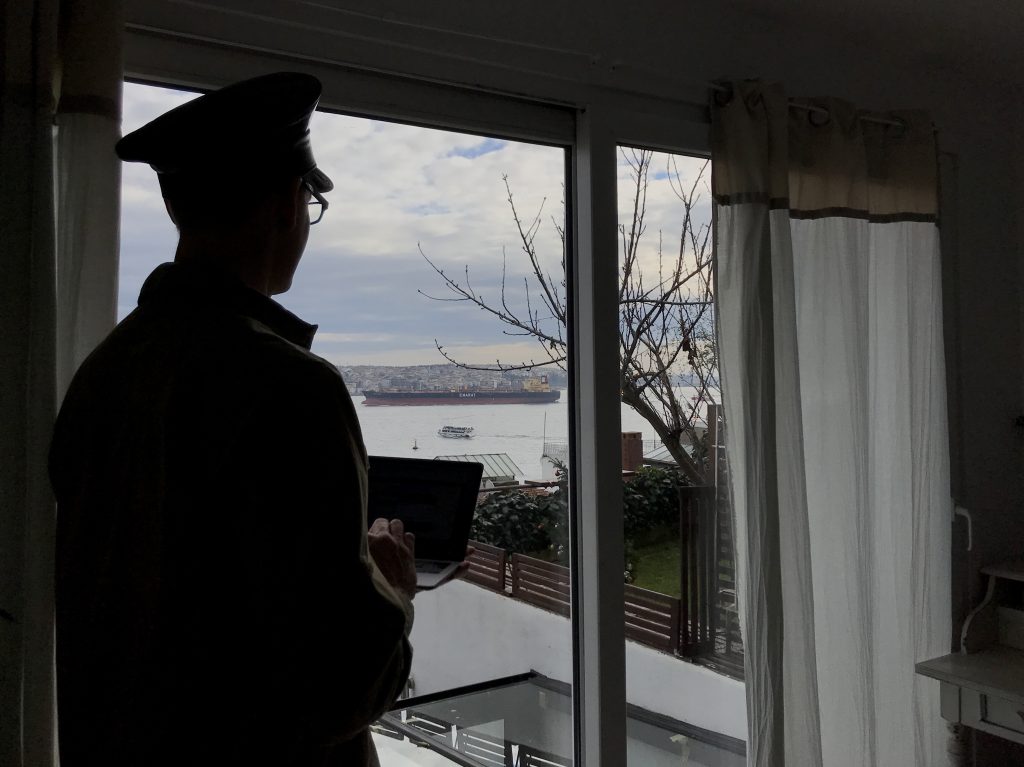
But I wasn’t listening to her bitter accusations. I was too busy watching a crude oil tanker passing by en route from Nemrut (Turkey) to Taman (Russia), traveling at 12.9 knots. The 250m long vessel had been on the move for 12 days and expected to arrive at its destination on the 30th at 3:07am.
If you think that’s “too much information”, then go to the other room and hang out with my wife. For the rest of you — especially those back home — the live shipping app also works for the St. Lawrence.
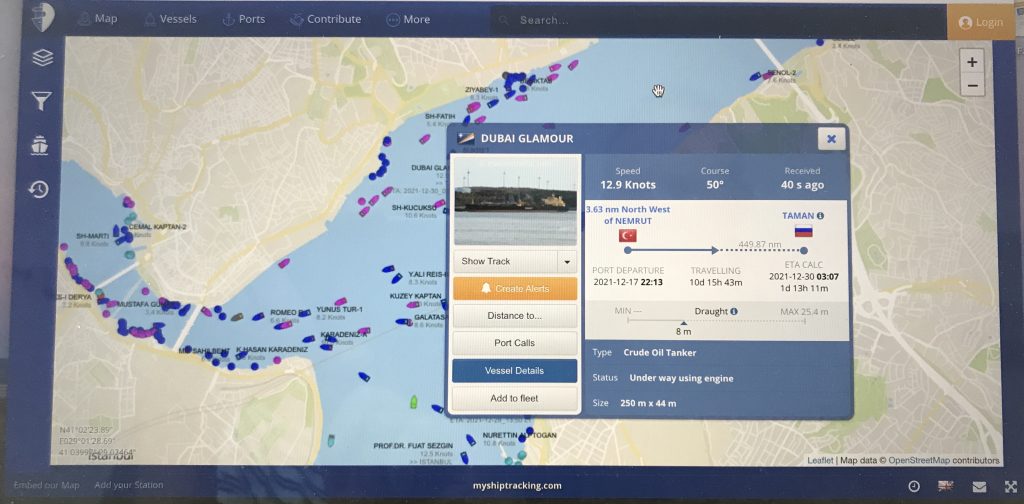
In the end, I couldn’t decide whether I should set out to conquer Asia like Alexander or just make myself another coffee.
We went out for something to eat instead.
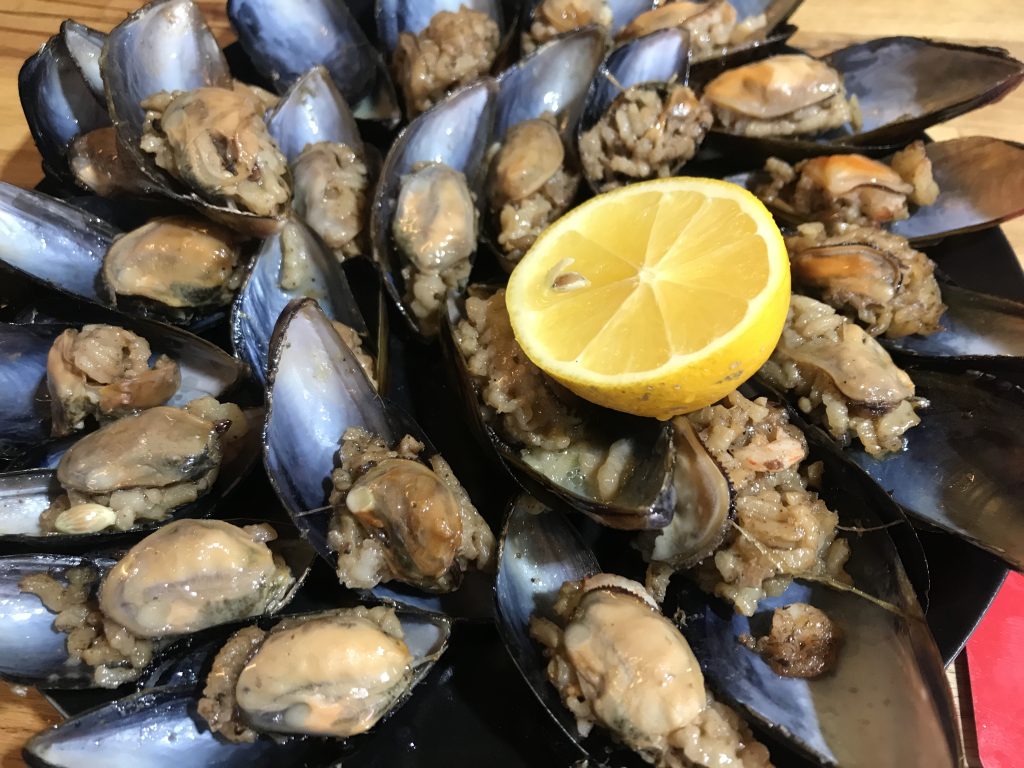
After a quick back alley stop for stuffed mussels, we headed straight to Tarihi Kalkanoğlu Pilavı. This family run establishment has been making pilav for 6 generations, since 1856. You could say it’s fit for a king. After all, this is the same rice dish Ottoman Sultans used to enjoy every day.
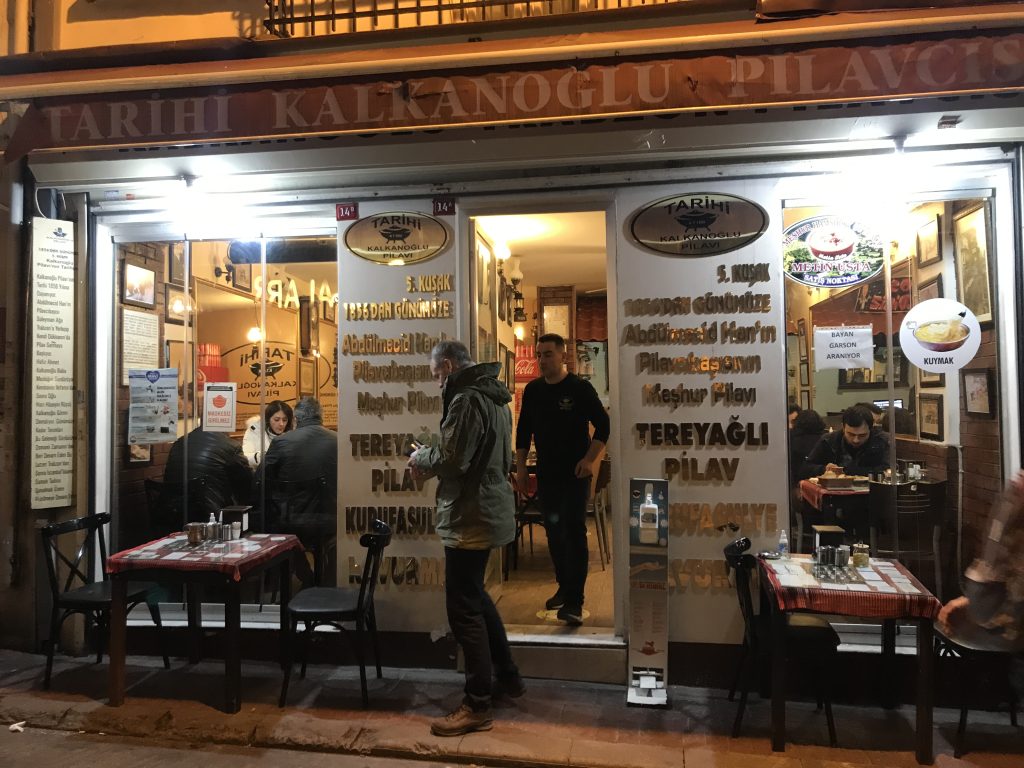
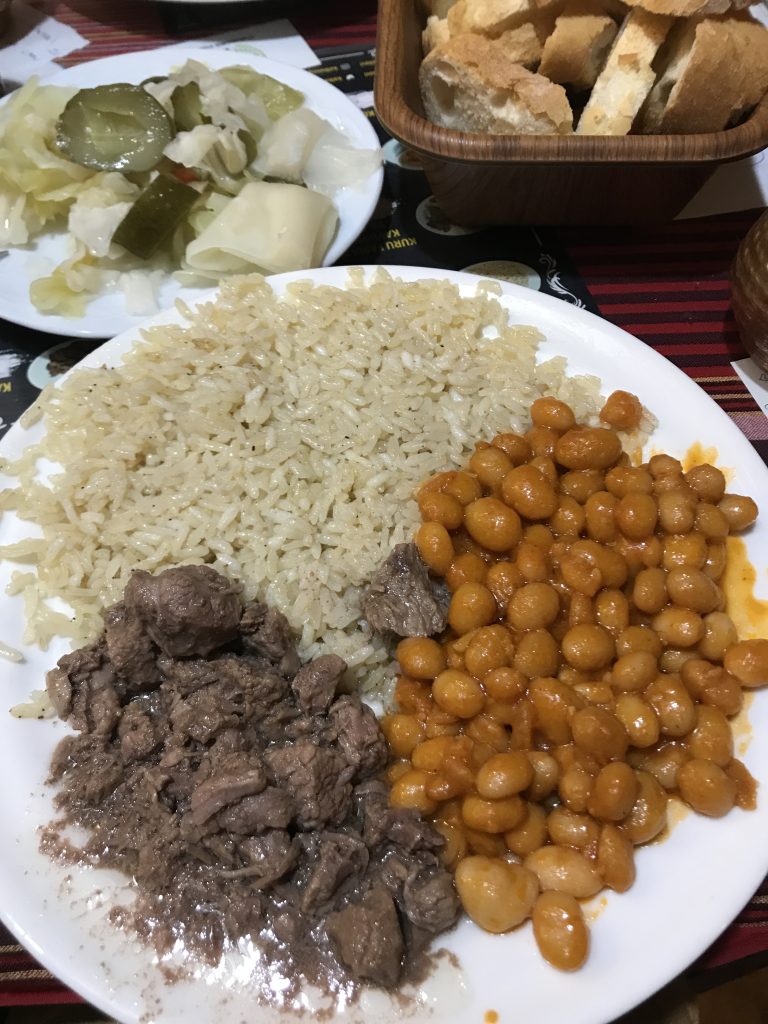
I was thankful to have a good meal because I had a long night ahead of me back at the flat, keeping a close watch on shipping with a glass of raki and a beady eye.

Hi Ryan
We absolutely loved Turkey, lucky enough to stay in a 4 floor dodgy flat between the spice markets and blue mosque with a roof top view taking in the bosphorus. The history of the place is mind blowing
And yes you are obsessed.
Regards
Guy
PS there is something playing up on your checkbox to submit comments, it doesn’t show up to tick, unless its just my mac not liking it. Only way I can get it to work is double click to highlight the whole page and then hit submit
Hi Guy,
Sounds like a great location. I’m looking forward to going back and exploring more of Anatolia. I was in Cappadocia and Ephesus years ago for a press trip, but those things always skim the surface and are far too rushed. Thanks for the heads up re: check box. I’ll look into it. It’s working fine on my mac. Such tech glitches are a mystery to me.